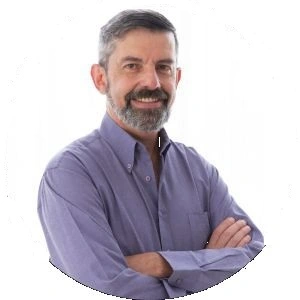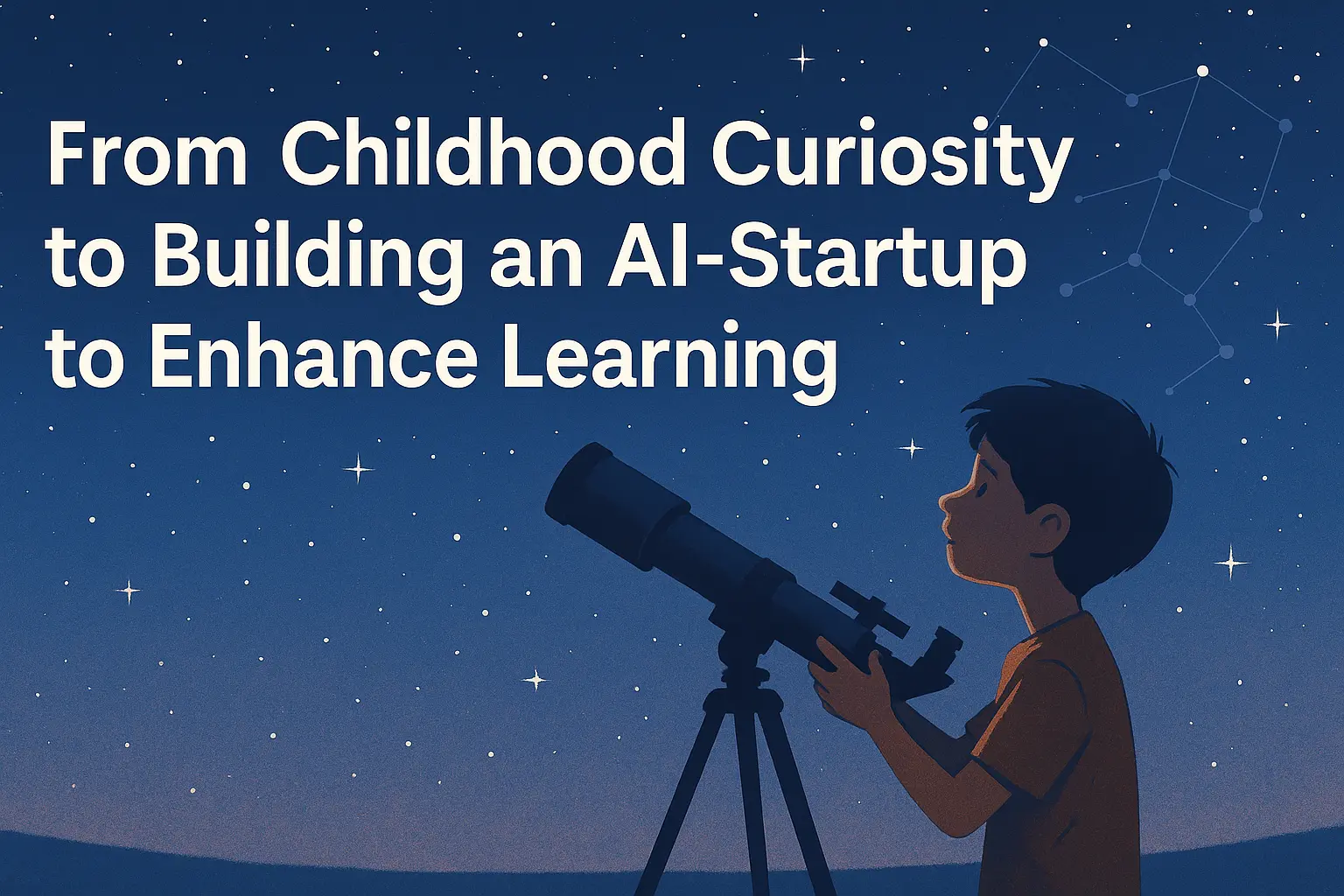The journey behind the idea
I was born into a household where formal education was limited, but the thirst for knowledge was limitless. My parents, despite their modest schooling, filled our home with books, encyclopedias, science magazines, and classic literature. Stimulated to read from a very young age, I learned to read at just three and a half years old, taught by my sister. From that moment on, learning and researching on my own became my greatest joy.
I grew up surrounded by instruments: telescopes scanning the night sky, microscopes unveiling hidden worlds, and circuits scattered across my father's electronics workshop. He was a curious and tireless learner — a man who taught me how to solder, measure voltages, and assemble kits, but most importantly, how to be curious. What I learned from him led to my first published article in an electronics magazine at age 16.
One of my earliest inspirations was a small book titled "Os Computadores," a 1968 introduction to computing technology. It wasn’t filled with puzzles, but it did spark the same kind of deductive thinking, curiosity, and imagination that would later shape my career.
That environment — where wonder for the universe met the thrill of understanding how things work — led me to Physics. In college, I immersed myself in quantum mechanics, relativity, and chaos theory. I later specialized in Theoretical Physics and spent more than two decades conducting research, publishing papers, and teaching science and engineering.
My passion for computing grew in parallel. While still in high school, I taught myself BASIC through electronics magazines and searched for computing courses in São Paulo — which at the time were only offered by large corporations like IBM to their clients' employees. In 1975, right before entering college, I finally enrolled in a COBOL course — my first structured step into programming.
During the early years of my undergraduate studies, I became fascinated by the early ideas behind artificial intelligence and how some systems were already "learning" to play chess — adjusting their models by playing repeatedly against humans and themselves. This process, which today we call machine learning, fascinated me instantly.
I bridged both worlds by working on computational physics projects and enrolling in several Computer Science courses. I became increasingly absorbed by the potential of AI.
My master's and doctoral work brought me deeper into the intersection of physics and programming, using Fortran, Pascal, Assembler, and Lisp.
I still remember the sense of wonder when I sent my first email in 1987 — and the excitement of joining my first internet chat that same year. It felt like a glimpse into the future.
In 1990, during my postdoctoral research in Germany and Austria, I focused on expert systems — the foundation for modern AI applications.
In 1994, I began teaching in higher education in Portugal, where I also engaged in research on learning theories. Teaching quickly became one of my deepest callings — a space where knowledge, communication, and curiosity intersect.
In 1995, I encountered the World Wide Web for the first time. Those early websites, with images and hyperlinks, opened my eyes to a new dimension of information access and interaction.
In 2003, I returned to Brazil to continue teaching at the university level and to deepen my research in learning theories and digital educational technologies — from virtual worlds to data science.
In parallel, I continued to update my skills. In 2016, I completed a Specialization in Data Science by Coursera, including courses on R programming and data science foundations. In 2017, I pursued the Deep Learning Specialization by Coursera, with courses such as Neural Networks and Deep Learning and Convolutional Neural Networks. More recently, in 2023, I studied Advanced Prompt Engineering Techniques, deepening my understanding of generative AI systems.
At the beginning of 2023, I discovered the first generative AI models. What immediately caught my attention was that ChatGPT was a chat — a conversational interface that allowed interaction with artificial intelligence in natural language, rather than the old-fashioned (but still dear?) coding in Lisp. I realized this had tremendous educational potential and quickly oriented my research in that direction. GPT rekindled the same awe I felt as a child, gazing at the stars with my father. For the first time, I saw technology as a way to liberate education, not replace it.
However, I soon realized — both through personal experience and the growing body of research — that getting the best results from generative AI requires highly sophisticated prompts, which most students are not equipped to craft. To address this, I created an online course teaching advanced prompting techniques tailored to educators and their teaching practices. But I quickly found that students, overwhelmed by their academic workload, had neither the time nor interest to engage with such techniques. So I took a different path: I decided to build an intelligent interface between the end user and AI — a system that receives data and user requests, processes them internally, generates advanced prompts, interacts with multiple AI models as needed, and post-processes the output into useful formats. All of this without requiring the user to prompt — just the push of a button.
Later that year, when the graduate programs at the university where I taught were unfortunately shut down, I was already deeply inspired by the potential of generative AI. So I made a difficult decision: I accepted a voluntary severance plan and gave myself permission to dream bigger — to take the leap into entrepreneurship and build a startup from that vision.
I began coding, experimenting, testing ideas. That’s how academicum.ai was born: a platform of AI-powered tools designed to relieve the academic workload — and give students and teachers back what really matters: time to learn, create, and think.
With a single click, you can:
- Automatically generate references from any text, link, or PDF
- Create flashcards and summaries instantly, with didactic curation
- Use an Intelligent Tutor that interacts through questions — not pre-filled answers — grounded in the learning principles of Papert and Piaget
- Soon, offer teachers a real-time overview of their classes, with metrics and feedback tailored to each student's learning pace and style
Today, academicum.ai has reached users in over 40 countries.
This journey didn’t begin with a pitch deck or a spreadsheet. It began with a curious father. With a book on computers. With the desire to learn. And it continues today with a mission: to use artificial intelligence to return humanity to education.
Renato P. dos Santos holds a D.Sc. in Physics (Centro Brasileiro de Pesquisas Físicas – CBPF), with postdoctoral AI research in Germany and Austria. He taught undergraduate and graduate courses for over 30 years, contributed as a peer reviewer and guest editor for international journals, and has published numerous peer-reviewed papers on artificial intelligence, educational technologies, and quantum physics.
LinkedIn ·
ORCID ·
Google Scholar
Join the AI-powered education revolution.
Try it free


